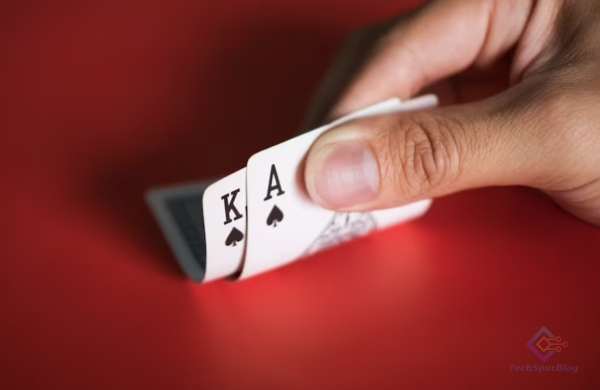
Poker, a game of skill, strategy, and wit, is often associated with one key element that adds a layer of excitement and unpredictability: bluffing. In this article, we will delve into why bluffing is such a vital component of poker and provide you with five invaluable tips to enhance your bluffing prowess.
Essence of Bluffing
Bluffing is the art of deception at the poker table, a tactic where you convince your opponents that your hand is formidable when, in reality, it might be weak. The primary objective of bluffing is to coerce your adversaries into folding their stronger hands, allowing you to scoop up the chips in the pot. Without bluffing, poker would become a monotonous game of predictable bets and straightforward outcomes.
Also Read: Poker Hands Strategy for Success – Power of Starting Hands in Poker
Maintain Consistency in Your Play
The first tip to becoming a successful bluffer is to remain consistent in your gameplay. Essentially, play your hand the same way you would if you possessed a strong set of cards. Any drastic variations in your betting patterns or demeanor can act as red flags to your opponents.
In live poker, even your body language can betray your intentions. An abrupt change from a reserved demeanor to excessive chatter may raise suspicion. These subconscious cues are known as “tells.” While seasoned players often conceal their tells, inexperienced opponents may inadvertently reveal their hand’s strength through their actions.
Choose Your Bluffing Targets Wisely
Not all opponents are equally susceptible to bluffing. It’s crucial to assess your adversaries carefully before attempting a bluff. Players who exhibit a highly cautious approach and rarely engage in hands, known as “nits,” should be spared from your bluffing attempts, as they typically have strong hands when they do bet. Similarly, “calling stations” who frequently play hands, even with mediocre cards, are not ideal targets for bluffs. However, “over-folders” who fold too easily, especially in the face of aggressive betting, can be profitable targets.
Time Your Bluffs Strategically
Bluffing is most effective when you have fewer opponents to deceive. Therefore, you should be more inclined to bluff early in a hand rather than later. For example, raising from the button with a weak hand can serve the dual purpose of stealing blinds and enjoying positional advantage in subsequent betting rounds. Semi-bluffing, which involves bluffing with a drawing hand that has the potential to improve (e.g., a straight or flush draw), can be a powerful tactic in the early stages of a hand.
Accept Getting Caught
Bluffing isn’t a flawless strategy, and occasionally, you will get caught in the act. However, this shouldn’t deter you from bluffing altogether. In fact, the occasional exposure of your bluffs can work to your advantage. It demonstrates to your opponents that you are not a one-dimensional player and keeps them guessing about your intentions. Don’t let a failed bluff affect your confidence; instead, learn from the experience and move on to the next hand.
Manage Your Bluffing Frequency
Finding the right balance in bluffing frequency is essential. If you’re rarely bluffing and not getting any calls when you do, consider bluffing a bit more often to keep your opponents guessing. Conversely, if your bluffs are consistently being exposed by opponents with average hands, you might be overbluffing. It’s essential to adjust your bluffing strategy based on the specific dynamics of your game and opponents.
Also Read: Chumba Casino: The Premier Destination for Online Gambling
Conclusion
Bluffing is a vital tool in a poker player’s arsenal. While it may not be the cornerstone of your strategy when you start your poker journey, mastering the art of bluffing can significantly enhance your gameplay. Remember to use these tips wisely, adapt your strategy to your opponents, and always prioritize strong starting hands as the foundation of your poker success. With practice and experience, you’ll become a formidable force at the poker table.

Leave a Reply